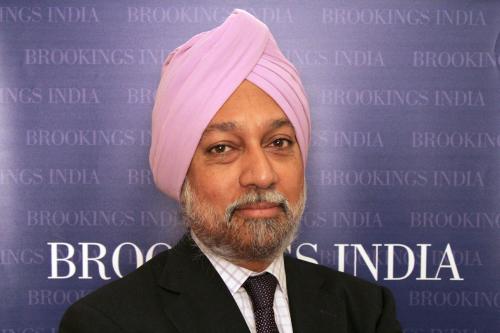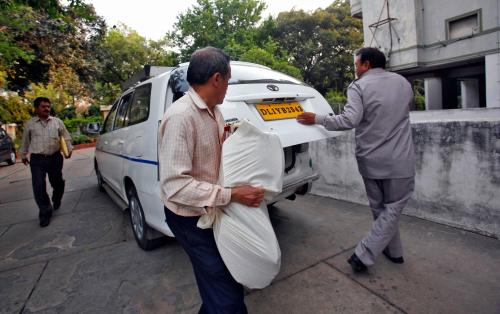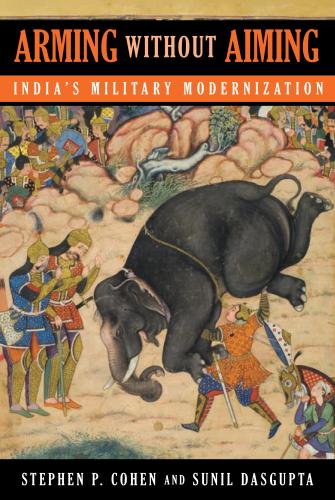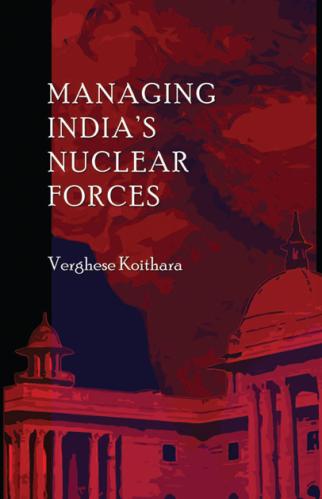Content from the Brookings Institution India Center is now archived. After seven years of an impactful partnership, as of September 11, 2020, Brookings India is now the Centre for Social and Economic Progress, an independent public policy institution based in India.
While India’s defence budget is now the fourth largest in the world, it is not providing adequate bang for the buck
The latest Union budget unveiled on 1 February by finance minister Arun Jaitley has been widely commended as a “defining” and “watershed” moment, as providing “stability and predictability”, and as being “pragmatic”. However, this euphoria is distinctly lacking among Indian and foreign experts who have keenly tracked the budget as it pertains to defence salaries, pensions, expenditure and military modernization programmes. Indeed, the tone among strategic experts on the defence budget is distinctly sombre.
They have variously warned that the budget has “top-line growth and diminished spending for procurement”, reveals an “over-manned, poorly equipped, early twentieth century force”, with “constraints that impede significant capacity-creation and inventory modernization”, under which “operational preparedness will deteriorate further even as the threats and challenges continue to increase”.
There are three factors that have, justifiably, driven the experts to such depths of pessimism. First is the ballooning personnel expenses (including pensions). With a standing force of nearly 1.5 million personnel, manpower costs, according to Laxman K. Behera of the Institute for Defence Studies and Analyses, account for over 83% of the overall growth in the defence budget. Ajai Shukla, another expert, notes that in the manpower-intensive army, personnel costs account for a whopping 72% of the budget while in the leaner air force and navy, personnel costs account for 34% and 28%, respectively.
Second, largely on account of these personnel expenses (which are likely to rise in the coming years), the budget allocation for modernization (or capital procurement) has, according to Behera, shrunk by 0.9%. The navy and army have seen their modernization budget decrease by 12% and 6.4%, respectively; only the air force has seen a 12% rise in its procurement budget on account of the “mega contracts” of Rafale aircraft and Chinook and Apache helicopters.
Third, even the meagre amount that is allocated for military acquisition and modernization is often underutilized. According to noted defence analyst C. Uday Bhaskar, the ministry of defence returned more than Rs13,000 crore from the capital head in 2015-16, and another Rs7,000 crore in 2016-17, which was unspent. This is, clearly, “a less than flattering reflection on the competence of fiscal planning and management within the ministry of defence”, especially when there is a dire paucity of state-of-the-art war-fighting equipment.
While India’s defence budget is now the fourth largest in the world (after the US, China and the UK), it is not providing adequate bang for the buck. While personnel are vital, without the right equipment they become a liability. To paraphrase a line from Top Gun: The Indian military’s ego is writing cheques that the country can’t cash.
Against this backdrop there are several disruptive approaches that might be considered to enhance India’s defence prowess.
First, as several of the defence experts have noted, there is a strong case to trim the personnel size of the Armed Forces, especially the army. China, which faced similar budgetary challenges, has achieved significant reductions. Since 1985, it dramatically cut troops on four occasions—by one million in 1985, another 500,000 in 1997, another 200,000 in 2003 and 300,000 more in 2015. In the last cut, China deliberately cut “troops equipped with outdated armaments, office staff, and personnel of non-combat organizations”.
India’s cuts need not be so drastic but they will be inevitable, and sooner is better than later. Besides, as India’s economy continues to grow, there will be a natural attrition from the Armed Forces. In 2015, India reportedly faced a shortage of 50,000 personnel, including 11,000 officers. Instead of trying to desperately fill these positions India could use this as an opportunity to restructure the Armed Forces into a leaner, meaner, well-equipped military. While this will, doubtless, lead traditionalists to howl in protest, the rising personnel costs make their case economically unsustainable.
Second, in addition to the size of the armed forces, India also has a large amount of equipment which is obsolete for its purposes. However, such equipment would be useful for many other countries, notably in Africa. Here India might consider selling not only the equipment but also providing the necessary training and maintenance (at a cost) for it. For instance, Afghanistan, which lacks a serious air force, is an ideal candidate for such a package.
Besides, the “Make in India” programme for defence equipment is likely to be viable only if there is a significant export component to it; the requirements of the Indian Armed Forces alone are unlikely to provide the economy of scale. Until now arms exports were moot given the ineffective public sector units, which can barely provide the requirements of the armed forces. However, as private companies step in, defence exports will become crucial.
Finally, India could also significantly step up both its budgetary and troop contribution to UN peacekeeping (just as China has done). The budgetary contribution would not only enhance India’s clout in the world body but this money would invariably come back to India as compensation for troops and equipment.
None of these disruptive approaches by itself is likely to improve India’s defence budget and capabilities. However, a combination of them might just do the trick. Will India’s disrupter-in-chief take the initiative?
This article first appeared in Mint, on 13 February 2017. Like other products of the Brookings Institution India Center, this article is intended to contribute to discussion and stimulate debate on important issues. The views are of the author(s). Brookings India does not have any institutional views.









Commentary
Op-edA disrupter’s guide to India’s defence budget
Mint
February 13, 2017